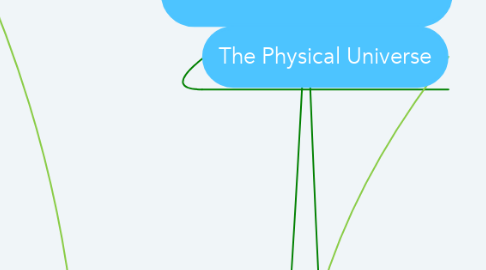
1. The Great Chain of Being
1.1. A classical conception of the metaphysical order of the universe. All beings from basic to very highest and most perfect are linked in a hierarchy in order to form one interconnected whole.
1.2. God
1.3. Angels
1.4. Kings and queens/popes
1.5. Archbishops
1.6. Dukes and duchesses
1.7. BIshops
1.8. Commoners
1.9. Tradesmen
1.10. Tenant farmers
1.11. Servants
1.12. Beggars
1.13. Pirates
1.14. Thieves
1.15. Actors
1.16. Gypsies
1.17. Animals
1.18. Birds
1.19. Reptiles
1.20. Insects
1.21. Worms
1.22. Plants
1.23. Minerals
1.24. Rocks
1.25. The philosophy of this is best seen starting with ancient Greek philosopher Aristotle. He viewed the universe as being eternal and made up of various distinct forms of being.
1.25.1. In his hierarchy, rocks were at the bottom, because they have no essence, or soul- they are held together by physical forces.
1.25.1.1. Classical philosophy: All living things have souls. Souls determine what power and characteristics each being possesses. Aristotle had a hierarchy of souls, they were classified according to each soul's specific powers.
1.25.1.2. Any being with life has the power to grow and reproduce (including plants etc.) These are the lower forms of life.
1.25.1.3. Animal life has the sensible soul- which includes the higher forms of life as well as the lower forms. Higher forms- sense, memory, movement.
1.25.1.3.1. The Rational Soul- defines the human being, as well as possessing the forms of growth, reproduction, sense, memory and movement, humans also possess the form of rationality.
1.25.1.4. Animals can also be separated into classes according to attributes.
1.26. NEOPLATONISTS took Aristotle's hierarchy of distinct beings and spiritualised it into a mystical unity inspired by Plato.
1.27. The basic structure remained the same, but for Plato, the highest forms were made into spiritual or immaterial beings. For Plato, as form was the immutable archetype existing in a transcendental realm, upon which every material object on earth is based on. Eg. a book is based upon the form of book.
1.28. Humans occupy an interesting place in this hierarchy, as they exist in both the immaterial and material realms. The more absorbed they get in material things and closer they get to evil , the further away they get from good. By contrast, the more they turn upwards to the intelligible realm and the good, the more good they possess.
1.29. Scholasticism: This is St. Augustine's version. In the scholastic understanding of the Great Chain of Being, the place of human beings holds more moral significance. As humans participate in the earthly and spiritual realms, their progression through life is seen as a journey towards God.
1.30. Modern Rationalism: The prevalence of modern science and the Copernican Revolution is often credited with having dismantled The Great Chain of Being as a perception of the world.
2. The Physical Universe
3. The Ptolemaic System
3.1. Ptolemy was an astronomer and geographer.
3.1.1. Believed that the universe is a geocentric cosmology- that the earth is stationary and at the centre of the universe. It was expected that the sun, moon, planets and stars (known as the heavenly bodies) had to travel in a circle (because a circle is the most perfect shape).
3.1.2. But, when the planets are observed from earth, their paths are not circular. Ptolemy's model explained this by saying that irregular movements were due to several circular motions seen from a different perspective.
